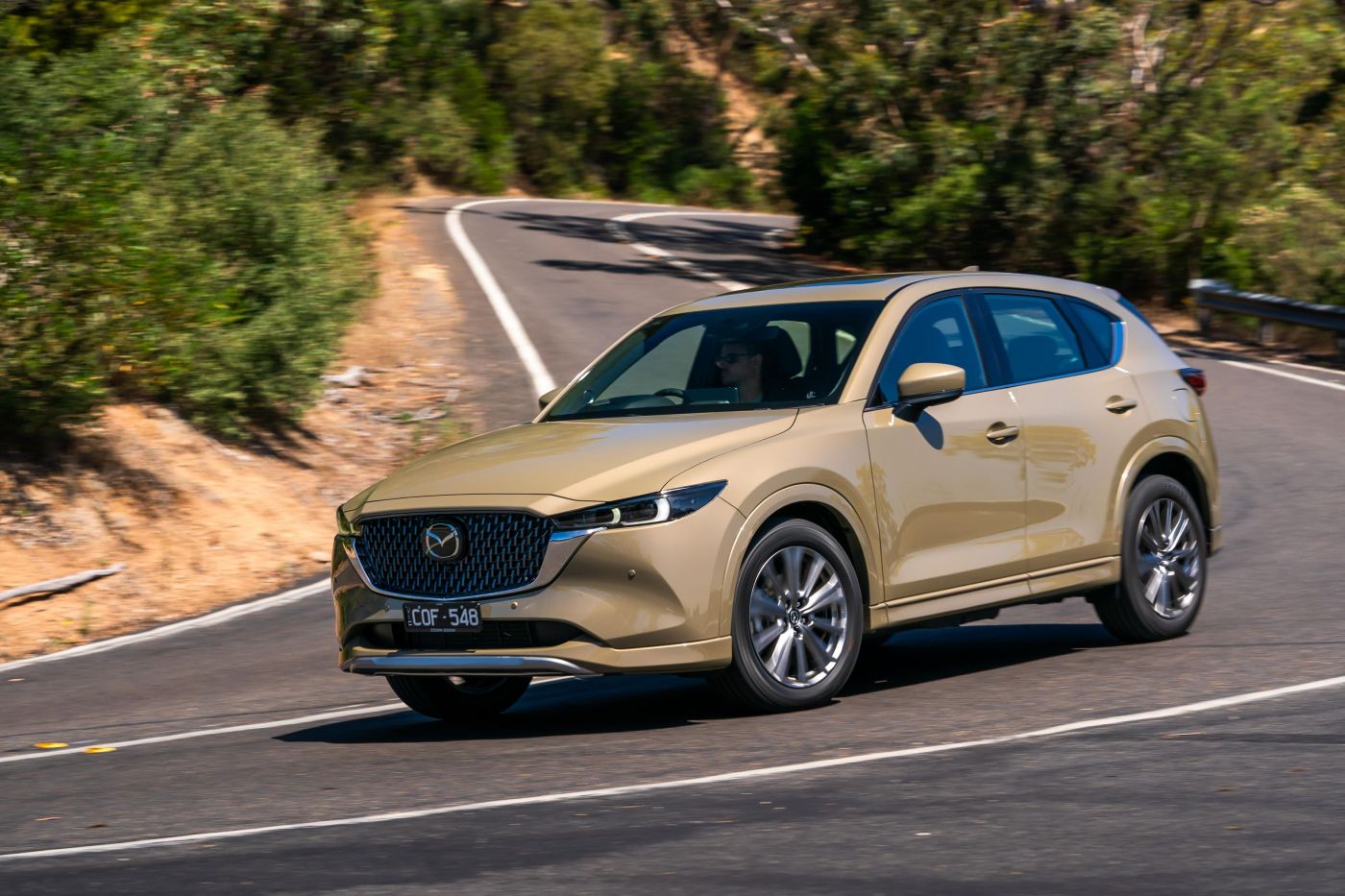Minivans aren’t just built to haul kids and groceries anymore — or at least, they shouldn’t be. In a world where road trips are back in vogue and families are looking for reliable, comfortable long-haul companions, a minivan should be able to do more than just survive the school drop-off line.
It should be able to hit the highway with confidence, swallow up luggage like a seasoned porter, and glide through hundreds of miles without making everyone on board question their life choices.
But let’s be real: not all minivans are cut out for that kind of endurance. Some are absolute road trip royalty — smooth, quiet, spacious, and engineered to soak up miles with ease.
Let’s just say they peak at soccer practice and start whining long before the kids do. Whether it’s poor reliability, underwhelming fuel economy, uncomfortable seating, or just a general sense that the whole thing was built on a budget and a prayer, some minivans simply don’t belong anywhere near the open road.
Minivans That Can Handle Cross-Country Drives
In this list, we’re breaking it down with no sugar-coating: five minivans that are absolutely up to the task of a cross-country adventure — and five that you’ll be lucky to get to the end of your driveway without second-guessing your purchase.
If you’re planning a family road trip or just want a van that won’t punish you for driving more than ten miles at a time, keep reading. This one’s for you.
1. Toyota Sienna (2011–Present)
The Sienna is the gold standard for long-distance family travel. Toyota’s bulletproof reliability, combined with optional all-wheel drive and a hybrid powertrain (post-2021), makes it one of the most fuel-efficient and dependable vans on the market.
While crossover SUVs continue to dominate the market, the minivan still reigns supreme as the ultimate family hauler. Let’s be honest: nothing beats the boxy utility of a minivan when it comes to squeezing in people and cargo.
Add in the ultra-practical dual sliding rear doors, and you’ve got a vehicle designed for pure functionality. Enter the redesigned 2011 Toyota Sienna — a fresh attempt to inject some life into the no-nonsense segment.
In terms of dimensions, the latest Sienna mirrors its predecessor, still offering seating for seven or eight passengers and remaining the only minivan with optional all-wheel drive — a unique selling point.
However, the 2011 model introduces several notable updates. These include the arrival of a new four-cylinder engine, a revamped six-speed automatic transmission, reclining second-row captain’s chairs, and a new rear entertainment system featuring a split-screen video monitor.
Buyers who are more budget-conscious and prioritize fuel economy may be drawn to the base and LE trims powered by the new four-cylinder engine. Meanwhile, at the opposite end of the lineup sits the new Sienna SE, boasting a sport-tuned suspension and subtle design upgrades like revised lower body skirting and a bolder front grille.
Even with these changes, the Sienna retains its core strengths — a calm, quiet ride, user-friendly handling, supportive seating, and an abundance of family-oriented features. Toyota’s reputation for reliability also carries over, suggesting that the Sienna should deliver plenty of dependable, low-maintenance miles.
That said, the 2011 Toyota Sienna isn’t without competition. Its long-standing rival, the Honda Odyssey, returns stronger than ever. Historically, the Odyssey has held the edge for drivers who crave a bit more engagement behind the wheel, offering sharper steering and more responsive handling.
With the arrival of the Sienna SE, however, Toyota now has an answer for those performance-minded family drivers. The Sienna also offers a quieter cabin and retains its AWD option — still a class-exclusive — making it a compelling choice for families navigating tougher weather conditions.
Smooth ride quality and a spacious, well-insulated cabin turn long hours on the interstate into a stress-free experience.
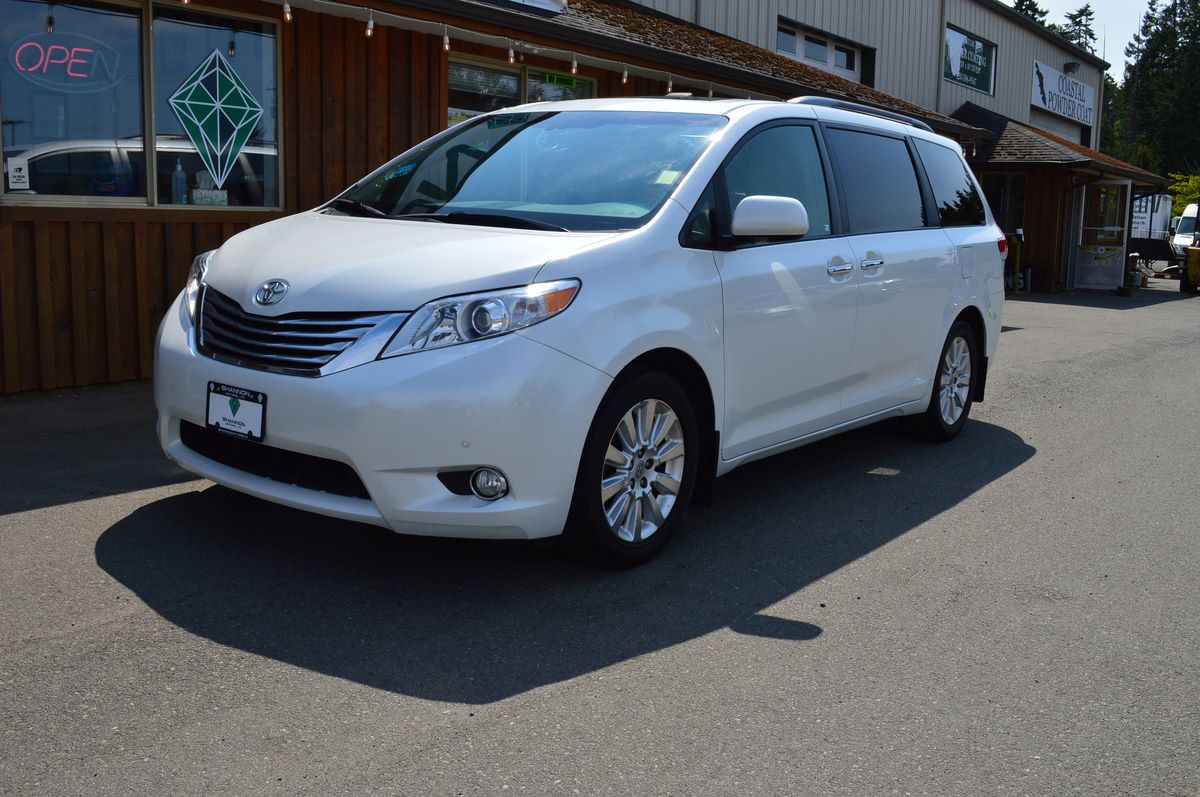
Cross-Country Strengths:
- Available AWD
- Hybrid models achieve 35+ MPG
- Legendary Toyota longevity (300k+ miles common)
Also Read: 5 Sedans with the Best Under-Hood Accessibility and 5 with the Most Crowded Engine Bays
2. Honda Odyssey (2014–Present)
The Odyssey blends comfort, smart interior design, and reliable performance. Its strong V6 engine and smooth 10-speed transmission (post-2018) offer consistent power on mountain passes and highways alike.
A newly introduced special edition trim level, positioned between the EX and EX-L, brings several convenience and entertainment upgrades. This variant includes the HondaVac built-in vacuum cleaner, a 115V power outlet, a rear seat entertainment system, and SiriusXM radio — all bundled together to increase the minivan’s family-friendly appeal.
The 2016 Honda Odyssey continues to serve as a benchmark in the minivan segment, offering seating for up to eight passengers and a reputation for refinement, practicality, and family-first design.
Powering the 2016 Odyssey is a 3.5-liter V-6 engine that delivers 248 horsepower and 250 lb-ft of torque, mated to a six-speed automatic transmission. Fuel economy ratings are competitive for the class, coming in at 19 mpg in the city and 28 mpg on the highway.
Cargo space is another strong point, starting at 38.4 cubic feet behind the third row. Folding down the third row increases capacity to 93.1 cubic feet, and folding both the second and third rows opens up a cavernous 148.5 cubic feet of total cargo room.
All Odyssey models come standard with dual front airbags, front-side airbags, and side curtain airbags. Starting with the EX-L trim, buyers gain access to advanced driver assistance features like forward collision warning and lane departure warning. A blind spot warning system is exclusive to the top-tier Touring Elite, while Honda’s LaneWatch blind spot display is available from the EX trim upward.
Features like CabinWatch and Magic Slide seats add convenience and practicality for road-tripping families.
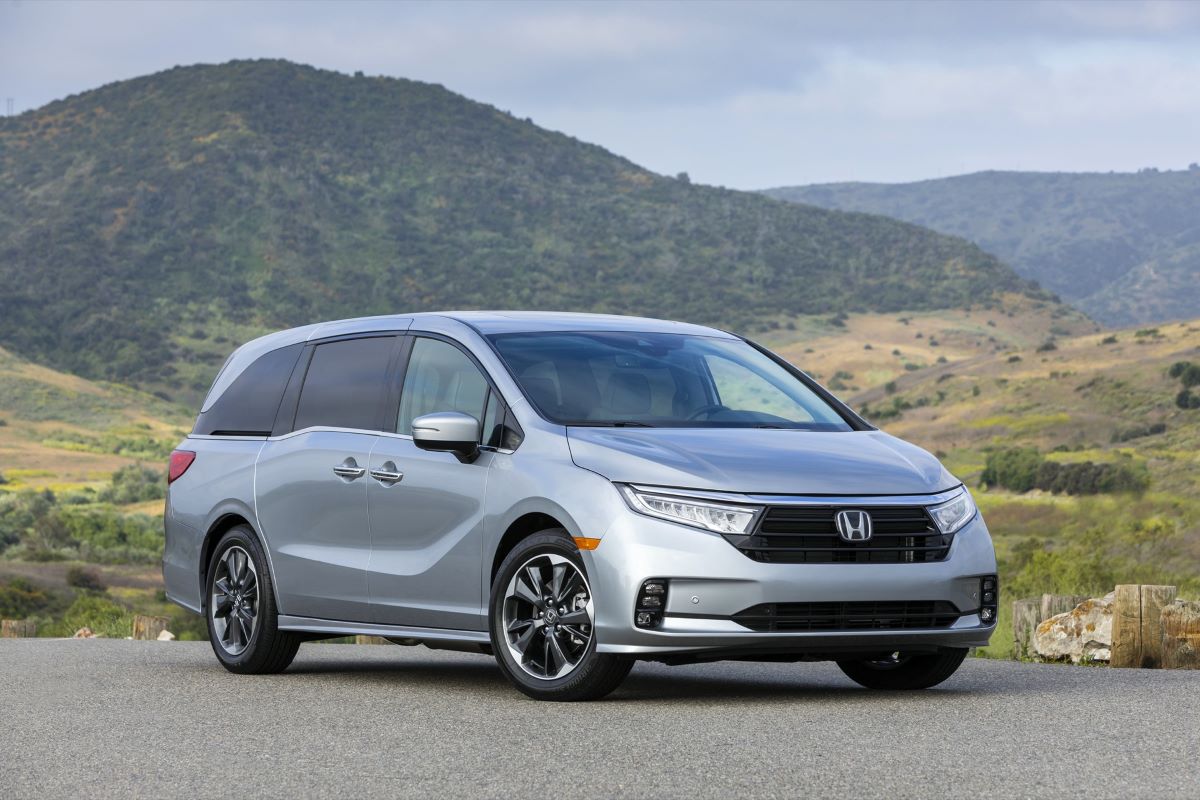
Cross-Country Strengths:
- Responsive V6
- Comfortable suspension
- Excellent infotainment and rear-seat entertainment
3. Kia Carnival (2022–Present)
Kia’s Carnival is a recent entry that doesn’t play by traditional minivan rules. With SUV-like styling, refined cabin materials, and a punchy V6 engine, the Carnival handles like a premium people-mover.
Kia’s reimagined minivan enters the scene with such a sweeping transformation that it debuts under a completely new name: Carnival. Replacing the long-running Sedona, the 2022 Carnival takes a bold leap forward in both design and branding.
Its squared-off, SUV-inspired styling is no coincidence—Kia is clearly tapping into the winning formula of its highly praised and top-selling Telluride SUV. With large wheels, crossover-like proportions, and distinctive daytime running lights that flow into the grille, the Carnival gives off an upscale SUV aesthetic that evokes comparisons to the Range Rover.
All Carnival trims are equipped with a 290-hp 3.5-liter V-6 engine, paired to an eight-speed automatic transmission that sends power to the front wheels. As for safety, Kia has packed the Carnival with a comprehensive list of standard driver-assistance features, including automated emergency braking.
The interior tech gets a noticeable boost too, highlighted by an optional dual-screen setup that combines digital gauges with a navigation-equipped center touchscreen.
The Carnival is all-new for 2022, bringing with it overhauled styling, upgraded features, and more advanced tech to make it a stronger competitor against rivals like the Chrysler Pacifica, Honda Odyssey, and the revamped Toyota Sienna. The 2022 Kia Carnival starts at $33,635, with pricing climbing to $47,635, depending on trim level and equipment.
The Carnival is offered in four main trim levels, spanning from the budget-friendly LX to the fully loaded SX-Prestige. Among them, the EX trim appears to hit the sweet spot between value and features.
It includes useful additions like a power-operated rear liftgate, an in-cabin intercom system, and a voice-control feature that allows rear passengers to interact with the infotainment system.
Every Carnival is powered by a 3.5-liter V-6, generating 290 horsepower and paired to an eight-speed automatic transmission. Unlike some of its competitors, all-wheel drive is not available, as the Carnival is built exclusively with front-wheel drive.
While the Chrysler Pacifica offers an optional plug-in hybrid and the Toyota Sienna comes hybrid-only, Kia has yet to introduce an electrified version of the Carnival—and likely won’t anytime soon. That said, Kia claims a towing capacity of up to 3,500 pounds.
During our first drive, the Carnival impressed with its composed handling and smooth ride. Whether cruising on the highway or cornering at speed, it delivered a balanced and comfortable driving experience.
Road trips are made easier by features like reclining second-row lounge seats and a high-quality touchscreen interface.
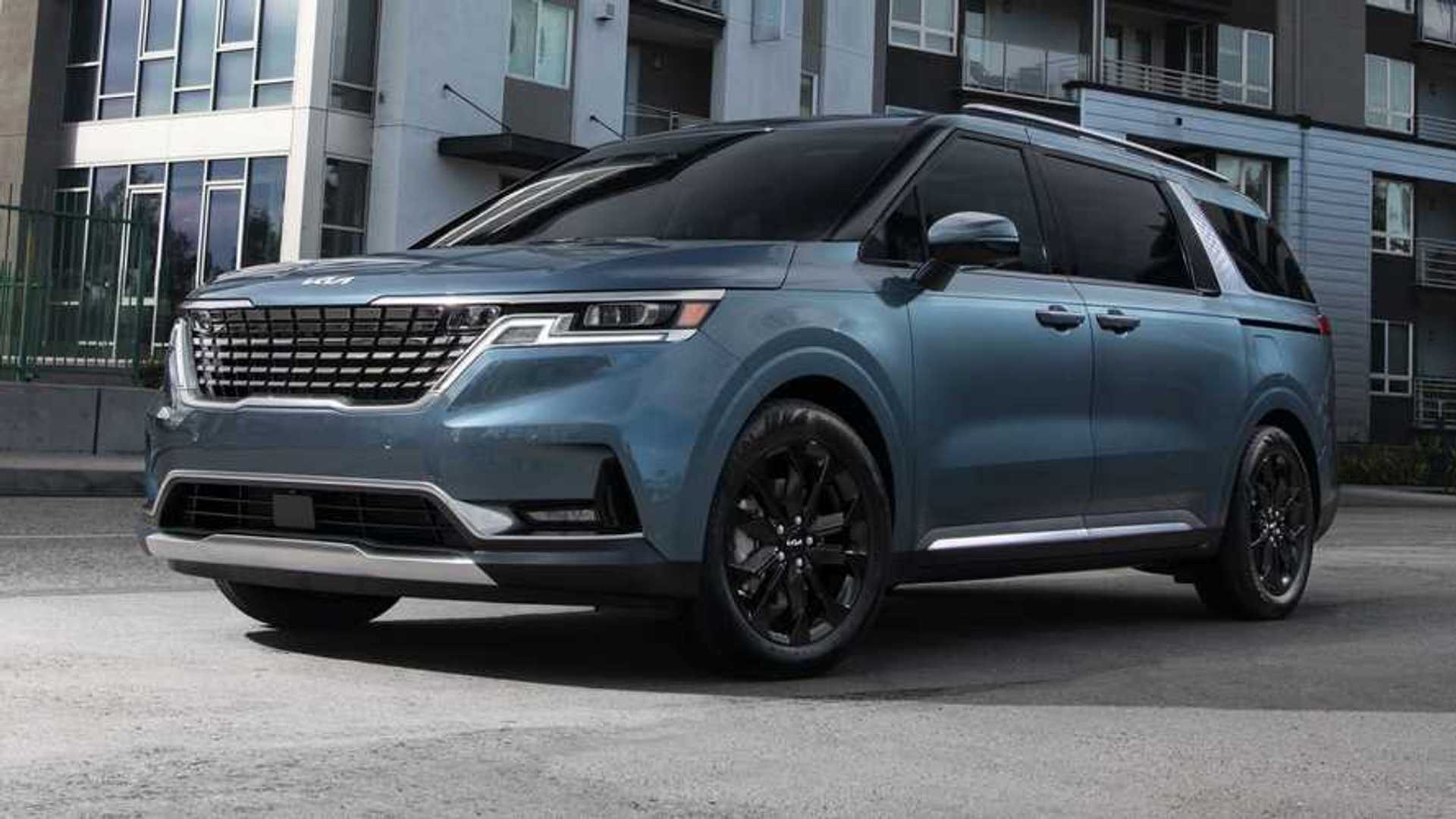
Cross-Country Strengths:
- Upscale interior
- Solid V6 performance
- High-tech convenience features
4. Chrysler Pacifica Hybrid (2017–Present)
The plug-in hybrid version of the Pacifica offers 30+ miles of electric-only range and nearly 500 miles of total range, making it an excellent option for long-distance trips with fewer gas stops.
The Pacifica Hybrid is technically a plug-in hybrid, meaning its battery pack can be charged using an external power source and deliver up to 33 miles of all-electric range.
In many day-to-day scenarios, that range is surprisingly sufficient—whether it’s the school drop-off, a morning commute, errands at lunchtime, and an evening run to soccer practice—”all without dipping into the gas tank.”
When additional range is needed, the robust V6 engine seamlessly takes over driving duties. According to the EPA, the Pacifica Hybrid returns 32 mpg in combined driving, which easily remains the best fuel economy figure in the entire minivan segment.
Opting for the Pacifica Hybrid instead of the regular gas-only version means sacrificing just two things. First is the Stow ‘n Go seat management system, found in the standard Pacifica’s second and third rows.
That feature allows both rows to fold flat into the floor, creating a large, unobstructed cargo area behind the front seats. But in the Hybrid, the 16-kWh battery pack takes up the space beneath the second row, making that fold-flat setup unavailable. Second, the Hybrid doesn’t offer a second-row bench seat, limiting total passenger capacity to seven rather than eight.
Beyond those trade-offs, the Pacifica Hybrid closely mirrors its gasoline sibling in every meaningful way. It shares the same upscale cabin materials, a user-friendly infotainment system, and a smooth, composed ride.
More importantly, the Hybrid comes well-equipped by default. Its entry-level Touring Plus trim aligns with a mid-tier gas-only Pacifica in terms of standard features, giving it solid value from the start.
Even the top-spec Limited isn’t that much pricier than the Touring Plus—not because it’s a bargain, but because the Pacifica Hybrid’s starting price is already on the high end.
Still, if you can look beyond the initial cost and the absence of second-row Stow ‘n Go, you’ll find the Pacifica Hybrid to be a thoughtfully designed, family-friendly minivan with an impressive amount of cargo and third-row space, arguably surpassing anything else in its class.
Chrysler also equipped it with a well-designed infotainment system and ultra-quiet cabin.

Cross-Country Strengths:
- Plug-in hybrid efficiency
- Comfortable and quiet
- Excellent cargo versatility
5. Mazda5 (2012–2015)
Though compact compared to others on this list, the Mazda5 is a nimble van with the heart of a Mazda sedan.
It’s ideal for those who don’t need a full-size minivan but still want to take extended trips with 4–5 passengers. Its tight steering and sedan-like handling make long drives more engaging.
The 2014 Mazda 5 stands out in the minivan segment due to its compact size and six-passenger capacity, which is unusual in a market dominated by larger, seven- or eight-seat models. If you can do without that extra seat and don’t require the added bulk of traditional minivans, the Mazda 5 still delivers impressive utility in a smaller footprint.
Despite its scaled-down dimensions, the Mazda 5 retains many of the features families expect from a minivan. It comes equipped with lightweight sliding rear doors that make it easy to load and unload kids from the second row, and it boasts an abundance of clever storage options throughout the cabin.
What really sets the Mazda 5 apart, though, is something most minivans simply don’t offer: a bit of driving enjoyment. Its smaller size makes navigating tight city streets less stressful, and thanks to its sport-tuned suspension and sharp steering, this minivan is surprisingly fun to drive—even on a basic grocery run.
However, this minimalist approach isn’t without its compromises. The only available engine is a 157-horsepower 2.5-liter four-cylinder, which is adequate for everyday driving and school runs, but it begins to struggle when the vehicle is fully loaded and pushed onto the highway.
Additionally, third-row seating is snug, and during those weeks when it’s your turn for carpool duty, you may find yourself missing that seventh seat found in more traditional minivan models.
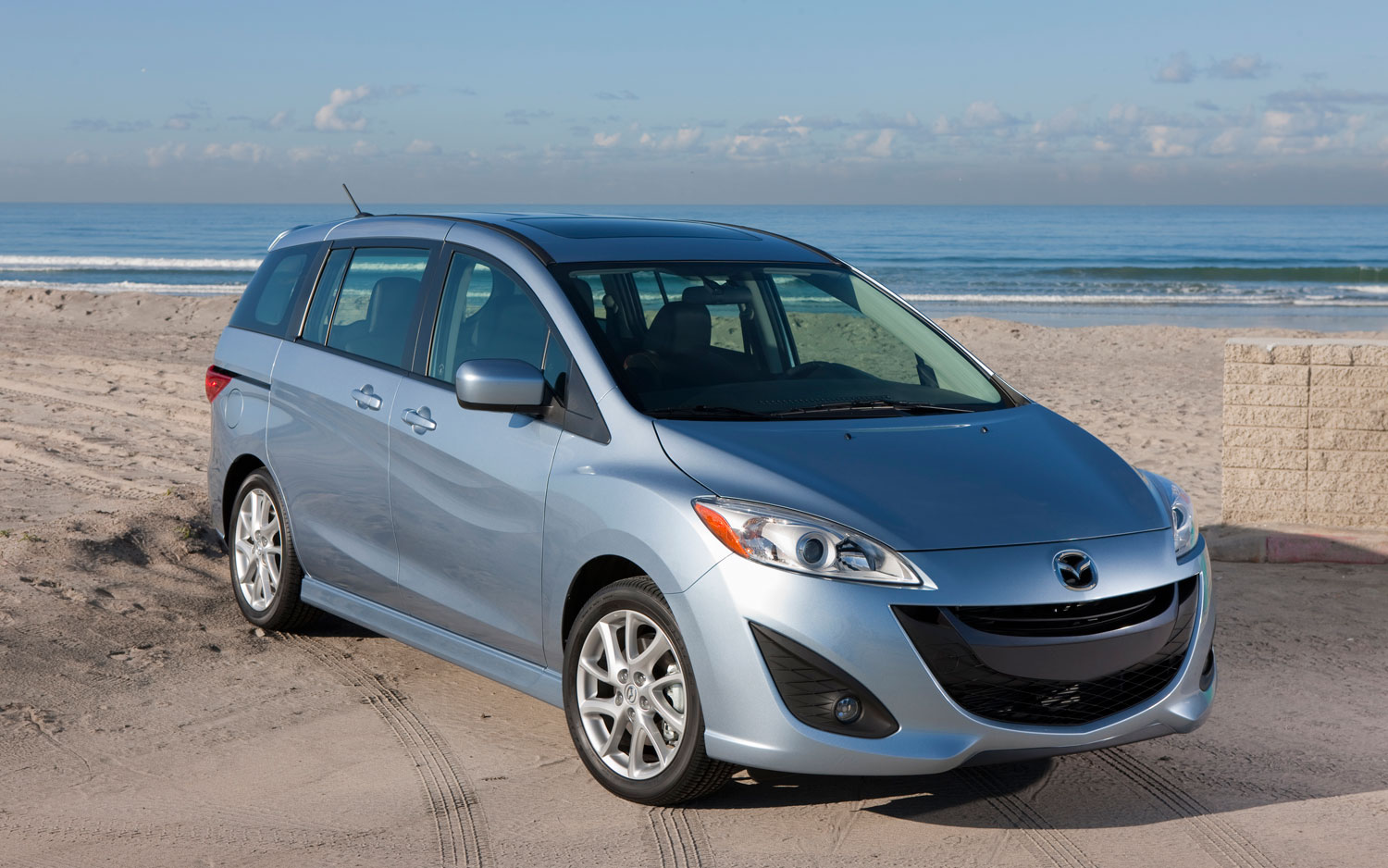
Cross-Country Strengths:
- Sporty handling
- Excellent reliability
- Compact size great for city and highway
Minivans That Can’t Make It to School
Not all minivans are created equal — and some shouldn’t even be allowed near a school zone. While these people haulers are supposed to be the gold standard for family practicality, a few models barely manage the morning commute without causing headaches.
From reliability nightmares to gutless engines and cramped, outdated interiors, these are the minivans that fail the most basic test: getting your kids to school without drama.
1. Chrysler Town & Country (2008–2014)
Despite its luxurious intentions, this era of the Town & Country is plagued by electrical gremlins, transmission problems, and expensive repair bills.
The 6-speed automatic is known to shudder and fail prematurely, making daily school runs a gamble.
The 2010 Chrysler Town & Country serves as a textbook example of a vehicle that appears impressive on paper but ultimately disappoints after extended use in real-world conditions. Initially, our expectations were high—especially after getting behind the wheel of the Dodge Grand Caravan, its mechanically identical sibling, during a yearlong evaluation of the 2008 model.
3The Town & Country’s blend of luxury-oriented design and family-focused features looked promising. It offered a potent 4.0-liter V6 engine, flexible seating and cargo arrangements, and a generally comfortable interior. While we weren’t thrilled with some of the interior materials, we were willing to overlook them based on everything else the van brought to the table.
Unfortunately, that optimism didn’t last. Unless the analog clock and faux-wood trim in the Town & Country deliver some kind of magical improvement, both minivans quickly fell from grace.
What started as excitement turned into a growing list of disappointments. During our long-term test, the Grand Caravan suffered from numerous issues including a temperamental radio, sliding door malfunctions, and a constant chorus of creaks and rattles.
The build quality proved underwhelming—most notably when the rear bumper warped so badly we could no longer open the tailgate. And it wasn’t just a one-off experience; owner reviews echoed many of our complaints, confirming that these weren’t isolated incidents.
It’s clear by now that the 2010 Chrysler Town & Country doesn’t exactly represent the brand’s finest work. Sure, it boasts clever features like Swivel ‘n Go and Stow ‘n Go seating, a dual-screen rear entertainment system, and even Sirius Satellite TV. But unfortunately, in our view, those advantages just aren’t enough to offset the glaring issues with build quality and material choices.
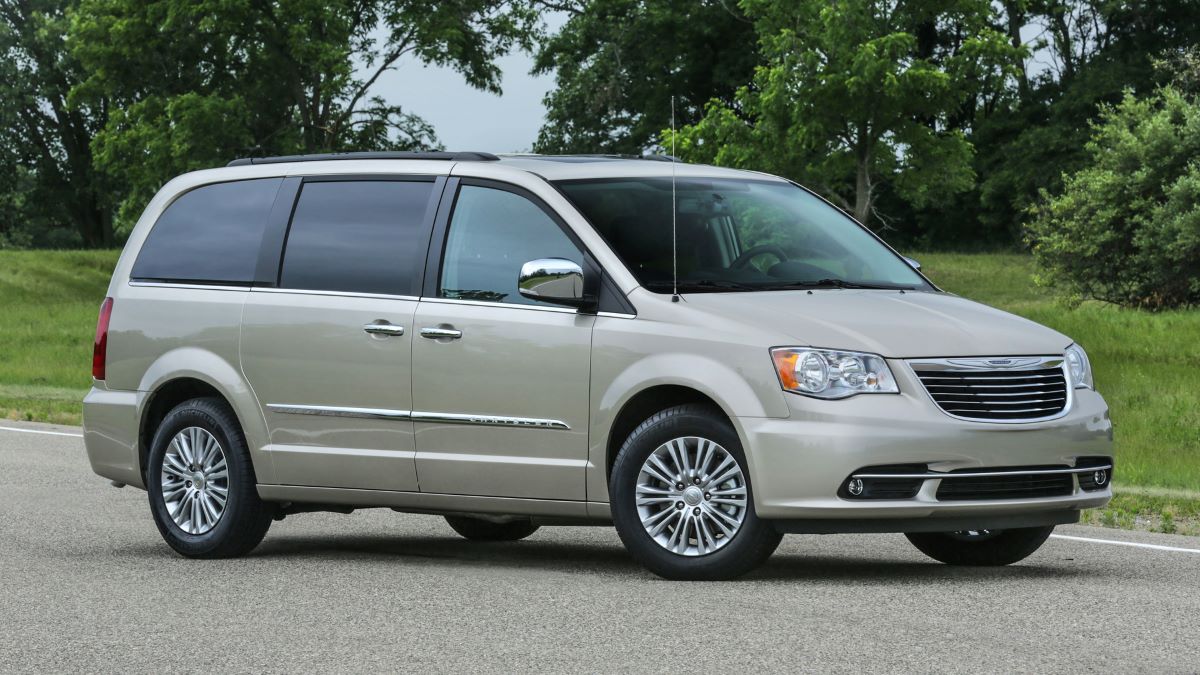
Weaknesses:
- Unreliable transmission
- Frequent electrical system issues
- High cost of ownership
Also Read: 5 Cars Thieves Can’t Crack and 5 That Get Stolen With a Laptop
2. Nissan Quest (2011–2016)
The Quest looked futuristic, but its CVT transmission proved to be its Achilles’ heel.
Owners report sudden failures, overheating, and difficulty finding replacement parts. Poor rear visibility and limited dealer support make even short commutes frustrating.
The 2013 Nissan Quest stands out as one of the most visually unique minivans available, yet it’s often overlooked by shoppers. That’s unfortunate, because the Quest has a lot to offer families who prioritize comfort and refinement.
Chief among its strengths is the driving experience—the Quest is arguably the most engaging minivan to drive. Its 3.5-liter V6 delivers 260 horsepower and 240 pound-feet of torque, and when paired with a continuously variable transmission (CVT), it delivers power smoothly and efficiently.
Nissan has spent years fine-tuning its CVT technology, and in the Quest, it complements the engine beautifully. Add in a well-balanced suspension, and you get a vehicle that’s equally at home on long highway stretches and winding backroads, with a ride quality that leans more toward comfort than utility.
Inside, the Quest takes a different design path compared to its peers. Rather than the typical fold-into-the-floor third-row seat, the Quest’s third row folds forward and flat, offering a layout more in line with many crossover SUVs.
The second-row seats follow suit, folding forward to allow for a simple switch between passenger-hauling and cargo-hauling duties. This setup prioritizes ease of use and day-to-day flexibility.
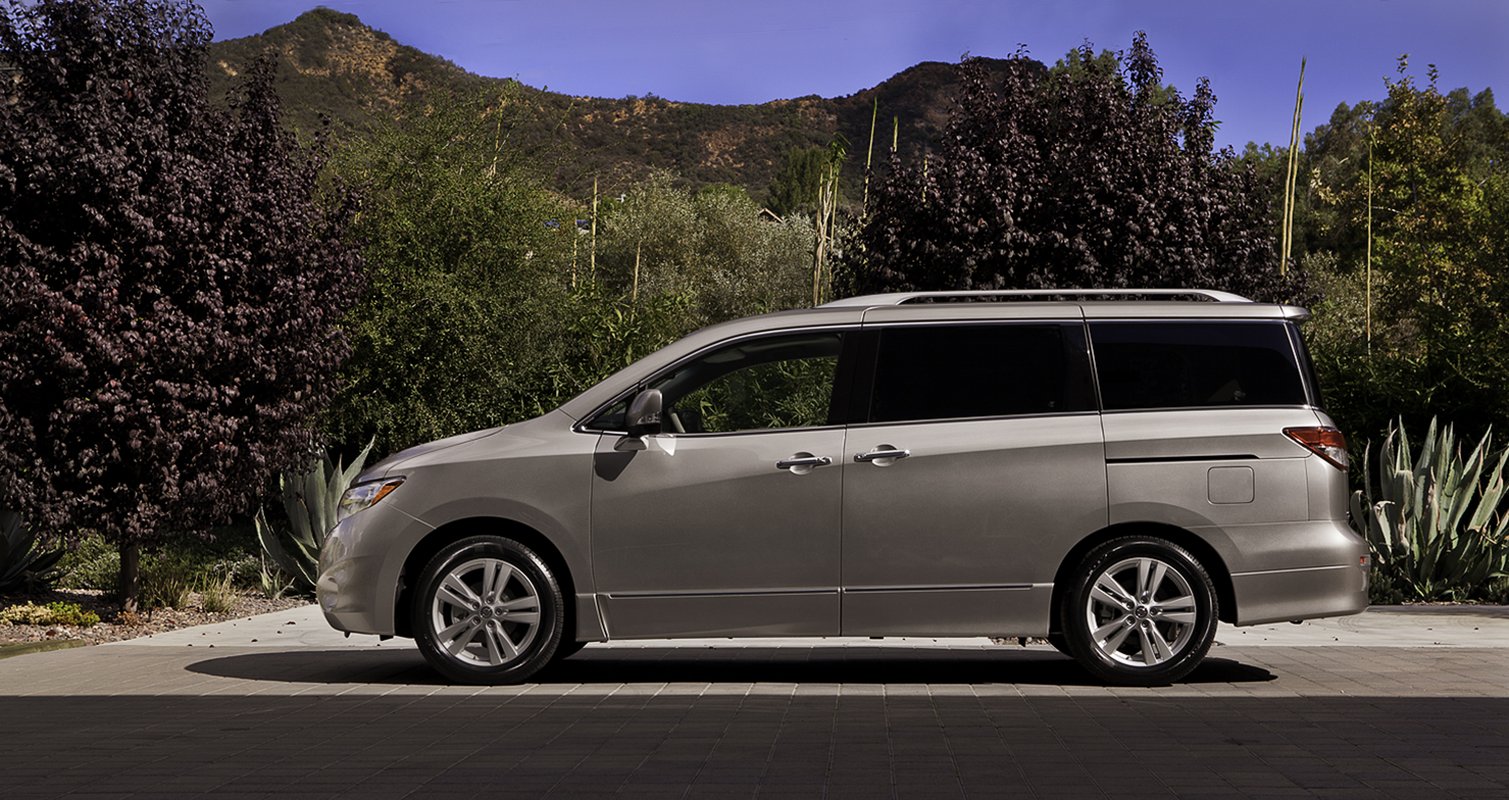
Weaknesses:
- CVT transmission failures
- Discontinued model = harder parts sourcing
- Mediocre fuel economy for its class
3. Dodge Grand Caravan (2008–2019)
The Grand Caravan is cheap to buy used but expensive to keep running. Its 3.6L Pentastar V6 is solid, but it’s surrounded by a body, transmission, and suspension components that wear out fast.
The 2019 Dodge Grand Caravan is a practical, no-frills minivan that sticks to the basics. In its base trims, it offers a notably low price tag and a solid list of functional features.
With seating for seven, the kind of interior space you’d expect from a minivan, and decent engine performance, it works well as a family vehicle—capable even on longer road trips. Its affordability stands out in a segment where many rivals pack on the features and cost, and that budget-conscious pricing could be a major advantage for families looking to maximize value over flash.
Higher trim levels introduce a handful of added comforts, such as leather upholstery and an optional rear-seat DVD entertainment system. Still, even fully equipped, the Grand Caravan remains utilitarian at heart. It hasn’t been fully redesigned in over a decade, and that age shows. Compare it to Chrysler’s more modern Pacifica, and the contrast is stark.
The Pacifica comes loaded with current infotainment tech like Apple CarPlay and Android Auto, along with advanced safety features such as forward collision warning and automatic emergency braking. The Pacifica also has a far superior interior in terms of quality, design, and overall driving refinement—driving home just how dated the Grand Caravan really feels in today’s minivan landscape.
If affordability is your number one priority, it might be smarter to consider a used or certified pre-owned version of the Pacifica or another rival minivan, which would likely give you more features and a better-rounded experience at a similar cost.
However, if buying new is non-negotiable and all you need is a functional family hauler that covers the essentials, the Grand Caravan delivers.
That said, nearly every competitor in the class has pulled ahead, offering more modern technology, advanced safety systems, and greater convenience. Since that test, Dodge has made minor updates—most notably removing power-adjustable pedals and adding a standard rearview camera—but the overall assessment remains relevant for the current model.
On the road, the Grand Caravan’s performance is sufficient for everyday driving. It doesn’t excel in refinement, especially compared to newer minivans, but it doesn’t commit any major missteps either.
Comfort-wise, the ride is passable, and the cabin is outfitted with just enough to keep passengers reasonably comfortable on longer drives. Interior flexibility is one of its biggest strengths.
Passenger space is generous throughout, and Dodge’s well-known Stow ‘n Go second-row seating system leads the class in versatility. Folding the third row is a manual process and slightly cumbersome, but it works reliably. And if you’re not using the second-row seats for passengers, the underfloor storage space they leave behind is impressively spacious.
Technology is the Grand Caravan’s weakest link. Base models offer outdated tech that doesn’t meet today’s expectations, and even the top trims fall short of segment standards. If modern connectivity and advanced infotainment are priorities, you’ll likely be disappointed here.
It’s competitively priced with other entry-level minivans but adds basics like a USB port and Bluetooth, as well as features like Stow ‘n Go third-row seats, upgraded cloth upholstery, and a few leather-trimmed touches that help elevate the interior.
These additions make the Grand Caravan feel less barebones without pushing the price too far beyond its budget-friendly appeal. Electrical problems and flimsy interior plastics make this a school-run nightmare.
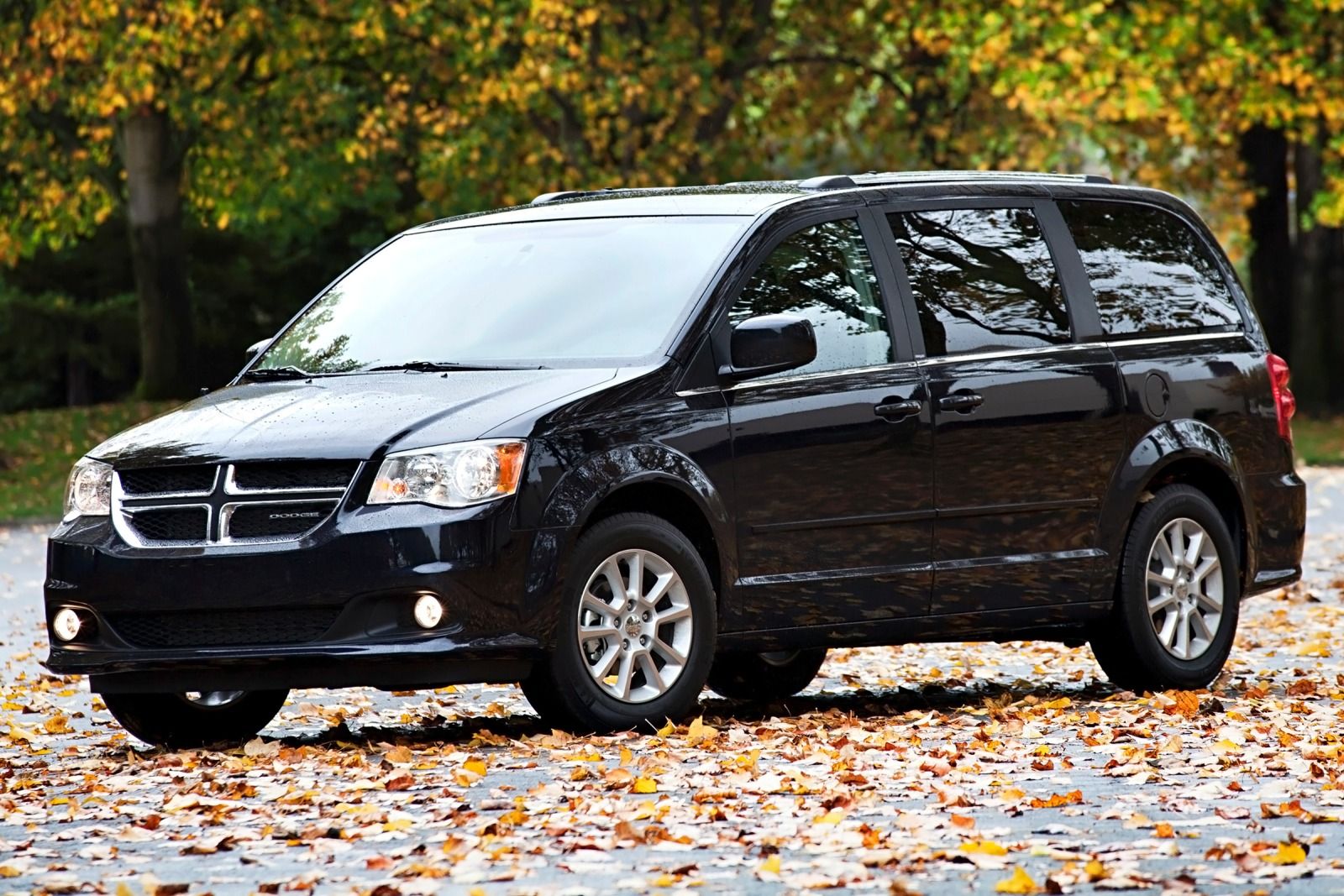
Weaknesses:
- Reliability varies wildly
- Suspension and brake issues
- Dated and glitchy electronics
4. Chevrolet Uplander (2005–2008)
The Uplander was GM’s final attempt at a minivan, and it didn’t go out on a high note. Poor build quality, chronic wheel bearing and brake issues, and a loud, underpowered engine made it a tough sell even when new. Now, it’s a relic best avoided.
A few years ago, Chevrolet attempted to reshape its minivan image by introducing the Uplander as a replacement for the aging Chevy Venture. While the Uplander technically falls into the minivan category, it takes a different styling approach.
Instead of the typical rounded, snub-nosed profile common to most minivans, the Uplander features a more prominent front end that gives it a bulkier, SUV-like appearance. Its side windows are also separated rather than designed as a single, expansive pane, another nod to sport utility aesthetics.
Chevrolet marketed the Uplander as a “crossover sport van,” clearly targeting buyers who wanted minivan practicality without the minivan stigma. But despite these cosmetic efforts, it ultimately comes off as a minivan with an unusually heavy-looking front.
Despite its unconventional design, the 2008 Chevrolet Uplander still includes many of the amenities families expect in a minivan. These include a split-folding third-row seat, folding trays between the front seats, ample storage throughout the cabin, and available features like rear park assist, a DVD entertainment system, and even a navigation system.
Under the hood, the Uplander’s 3.9-liter V6 engine delivers 240 horsepower, offering reasonably capable performance for a vehicle in this segment.
Unfortunately for Chevrolet, delivering a merely adequate product isn’t enough in a competitive minivan market. In nearly every important area—ride quality, safety ratings, and available features—the Uplander comes up short compared to other minivans.
Its driving dynamics are less refined than class leaders, and it lacks key features like a rearview camera and third-row side curtain airbags. On the plus side, the Uplander typically sells for a few thousand dollars less than similarly equipped competitors, making it potentially attractive for budget-conscious buyers.
Still, for those willing to spend a little more for a better overall experience, options like the Dodge Grand Caravan, Honda Odyssey, Kia Sedona, and Toyota Sienna offer far more in terms of quality and features. Even within GM’s own lineup, crossover SUVs like the Saturn Outlook and GMC Acadia provide more SUV-like styling and functionality than the Uplander can match.
Performance-wise, the 2008 Uplander is powered by a 3.9-liter V6 engine that produces 240 horsepower and 240 pound-feet of torque. This engine is E85-capable and is paired with a four-speed automatic transmission that drives the front wheels. Fuel economy for the 2008 model is estimated at 16 mpg in the city and 23 mpg on the highway.
In terms of safety, the Uplander comes equipped with standard antilock disc brakes, stability control, and traction control across all trims. Front side airbags are optional on the base LS model and standard on the LT, while second-row side airbags are only optional on LT models.
These additional side airbags cover both the head and torso of outboard passengers in the second row. However, the Uplander lacks any airbag protection for third-row occupants—something that most of its competitors provide through side curtain airbags.
In government crash testing, the 2008 Uplander earned a five-star rating—the highest possible—for protecting front passengers in frontal collisions. In side-impact tests, it received four stars for front occupant protection and five stars for those in the rear.
The Insurance Institute for Highway Safety gave the Uplander a “Good” rating, their highest, in frontal offset crash testing. However, in the side-impact test, the results were mixed.
With optional rear side airbags installed, the van earned an “Acceptable” rating—the second-highest score. Without those airbags, the Uplander’s rating dropped to “Poor,” the lowest possible grade.
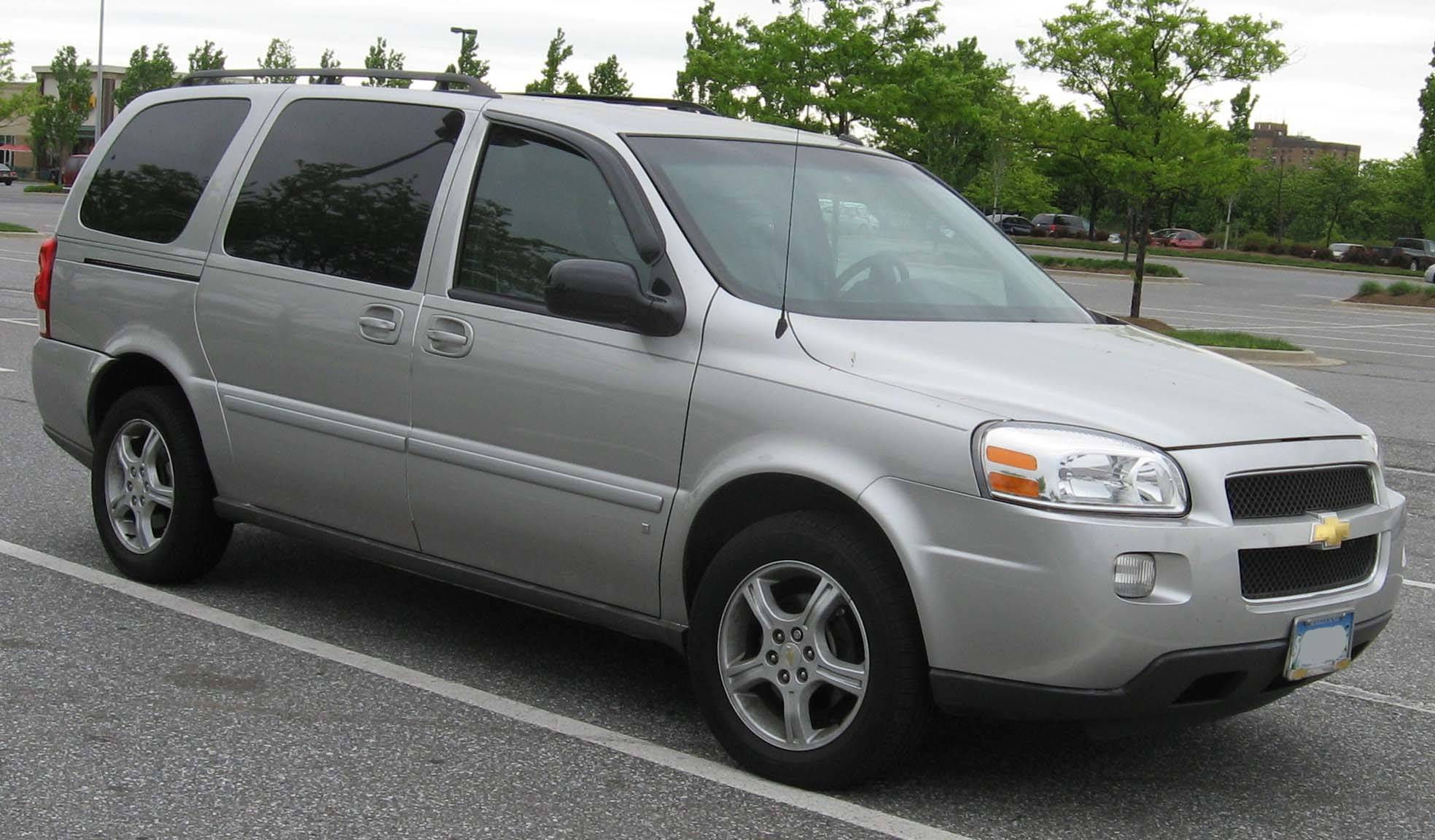
Weaknesses:
- Low build quality
- Constant front-end issues
- Weak engine and outdated interior
5. Ford Windstar (1999–2003)
The Windstar’s list of flaws is long: blown head gaskets, transmission failures, rust-prone undercarriage, and failing subframes.
Ford markets the Windstar based on its well-earned reputation for safety—an essential trait in the competitive minivan segment, where protecting family is a top priority. Over the years, the Windstar has consistently received the highest frontal crash-test ratings for both driver and front passenger.
To enhance its safety credentials even further, it can be outfitted with side airbags that help it achieve top scores in side-impact crash safety. The Windstar features dual-stage airbags that deploy in response to data from crash severity sensors, seatbelt usage sensors, and a driver seat position sensor, all working together to maximize occupant protection.
Additionally, it comes with a low tire-pressure warning system and seatbelt pre-tensioners. Optional safety and convenience features include self-sealing tires, power-adjustable pedals, heated signal mirrors, and a reverse sensing sonar system.
For 2002, Ford has pushed even further into the realm of advanced safety by offering AdvanceTrac stability control on the Windstar. Included as part of the optional Family Security package, AdvanceTrac continuously monitors the van’s direction of travel and compares it with the driver’s steering input.
If the system detects that the van is veering off course or losing control, it automatically applies selective braking to specific wheels to help the driver regain control and keep the vehicle on its intended path.
The 2002 Windstar is available in four trim levels: LX, SE, SEL, and Limited. All versions come with dual sliding side doors, though only the SE, SEL, and Limited offer power-sliding functionality.
To give the LX—the most popular trim—a more refined look, Ford added painted bumpers, driving lights, and made 16-inch aluminum wheels available this year. The SE Sport trim has been discontinued, signaling that the market has little interest in a “sporty” minivan.
Under the hood, the Windstar is powered by a 3.8-liter V6 engine that channels 200 horsepower to the front wheels through a four-speed automatic transmission. While the van’s acceleration is more than adequate, the engine tends to be noisy under load. Still, its fuel economy—rated at 24 mpg on the highway and 18 mpg in the city—is respectable for a vehicle of its size and weight.
Inside, the Windstar delivers a fairly pleasant experience. The front seats are comfortable and the ergonomics are thoughtfully designed, keeping both driver and front passenger content.
A notable Ford innovation is the “conversation mirror,” a parabolic mirror that allows the driver and front passenger to easily monitor what’s happening in every seat—a particularly handy feature for parents refereeing backseat disputes during road trips. The Autovision entertainment system, once exclusive to higher trims, is now available on the LX model.
However, if you want leather seats, you’ll have to opt for the SEL or Limited trim levels. One major downside to the Windstar’s interior is its inefficient use of space. Despite its large exterior, second- and third-row passengers are shortchanged on legroom, and the cabin feels more cramped than it should.
On the road, the Windstar doesn’t quite hit the mark when it comes to ride quality, falling a bit short of its competitors in that department. Still, it offers a practical mix of everyday usability, decent performance, and innovative features.
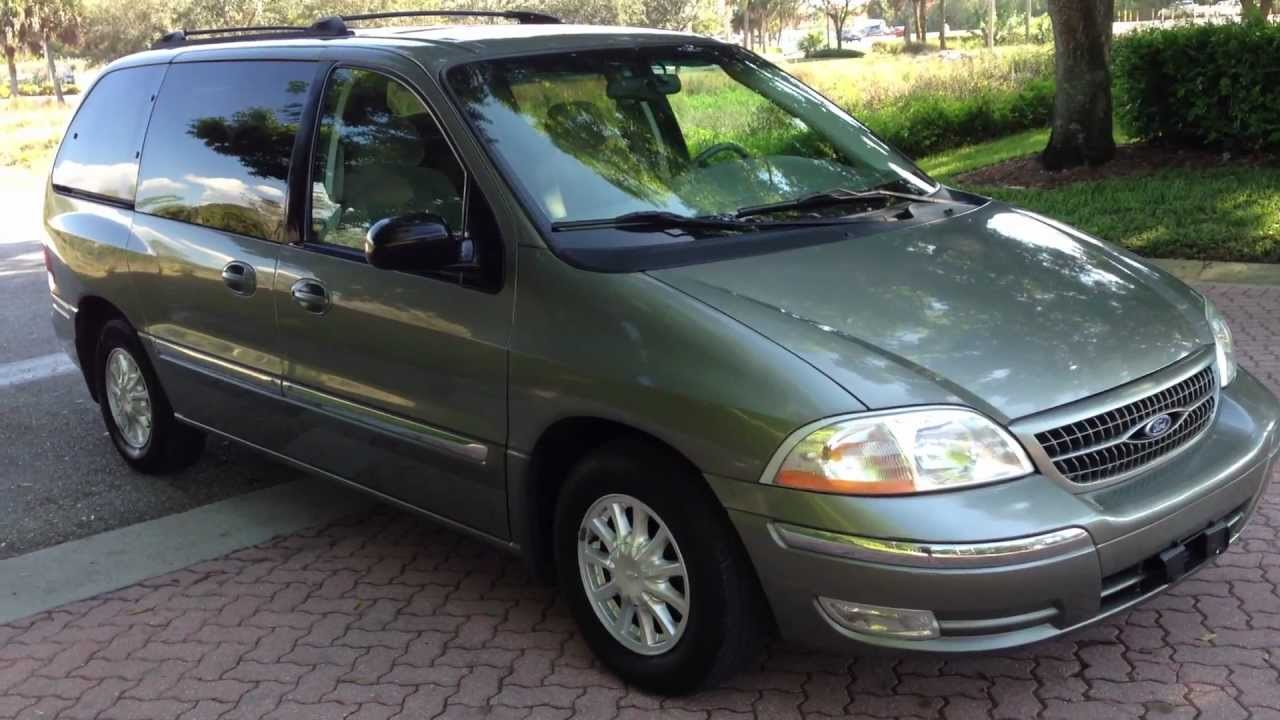
Ford eventually gave up on minivans, and the Windstar is part of the reason why. These vans were recalled multiple times and still didn’t earn a reputation for safety or reliability.
Weaknesses:
- Major engine and transmission issues
- Frame rust and suspension failures
- High likelihood of breakdowns
Not all minivans are created equal. While models like the Sienna, Odyssey, and Carnival shine on the open road with reliability and comfort, others like the Windstar and Quest have reputations tarnished by breakdowns and costly repairs.
For families planning cross-country adventures or simply wanting a worry-free ride to school it pays to pick wisely.

